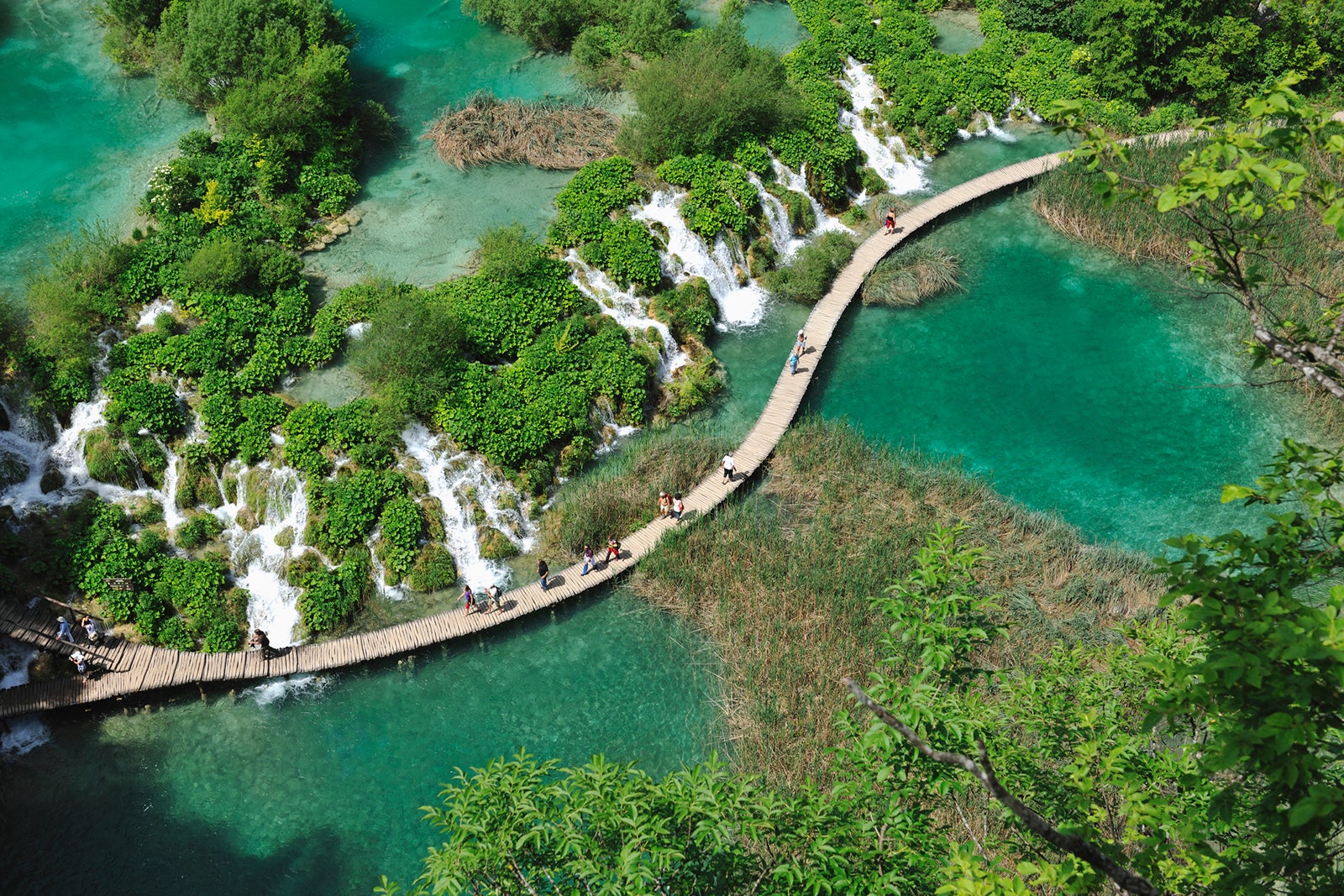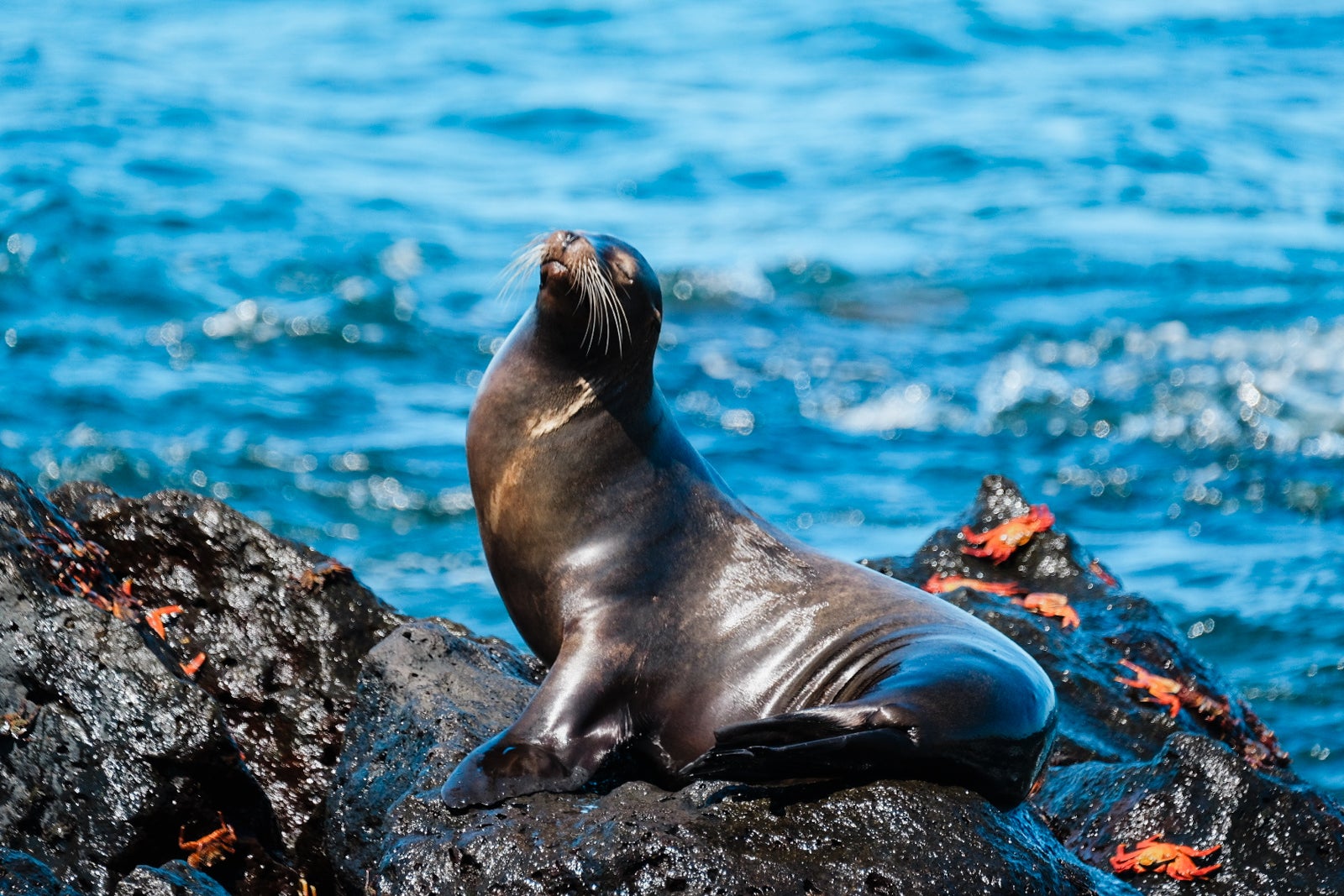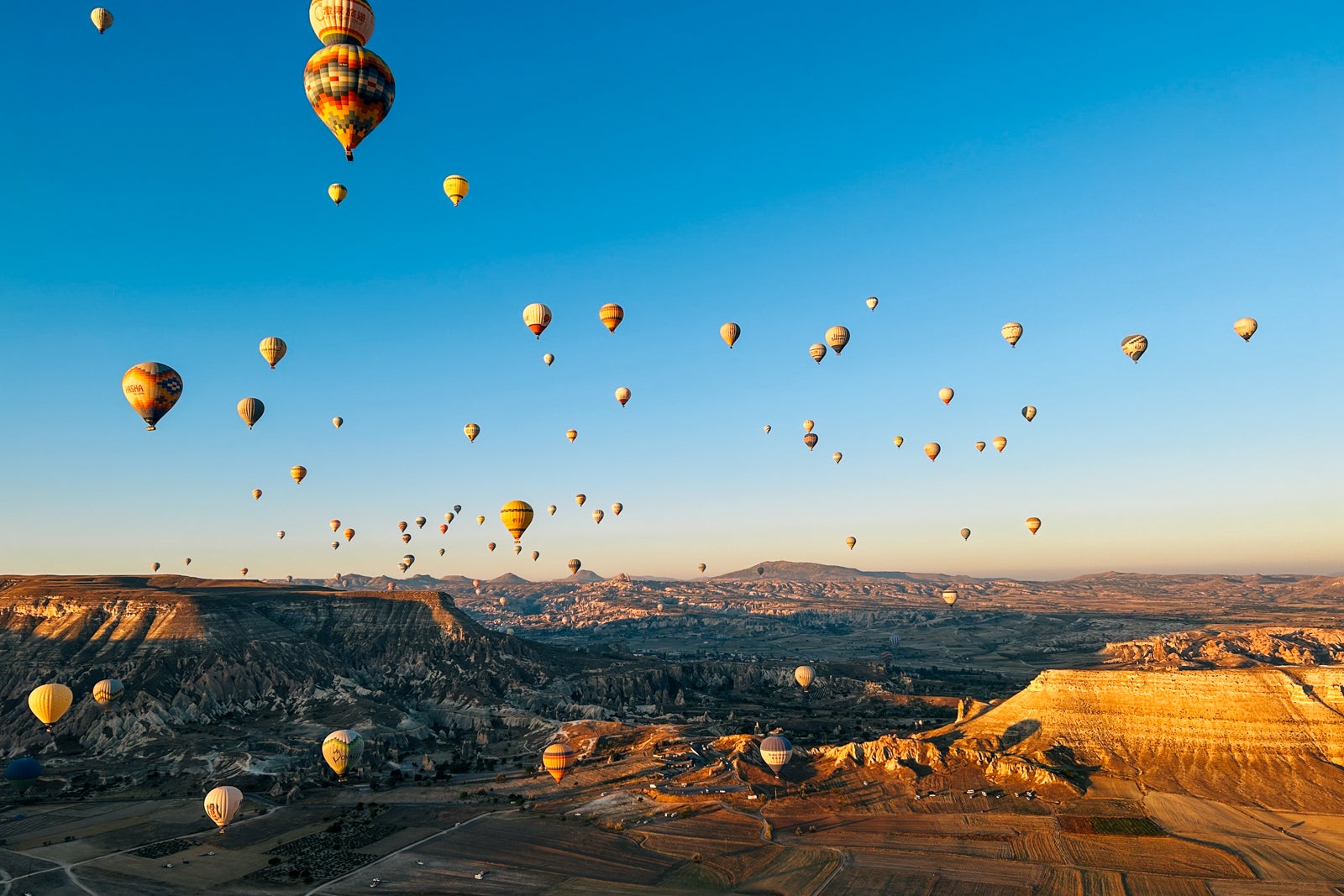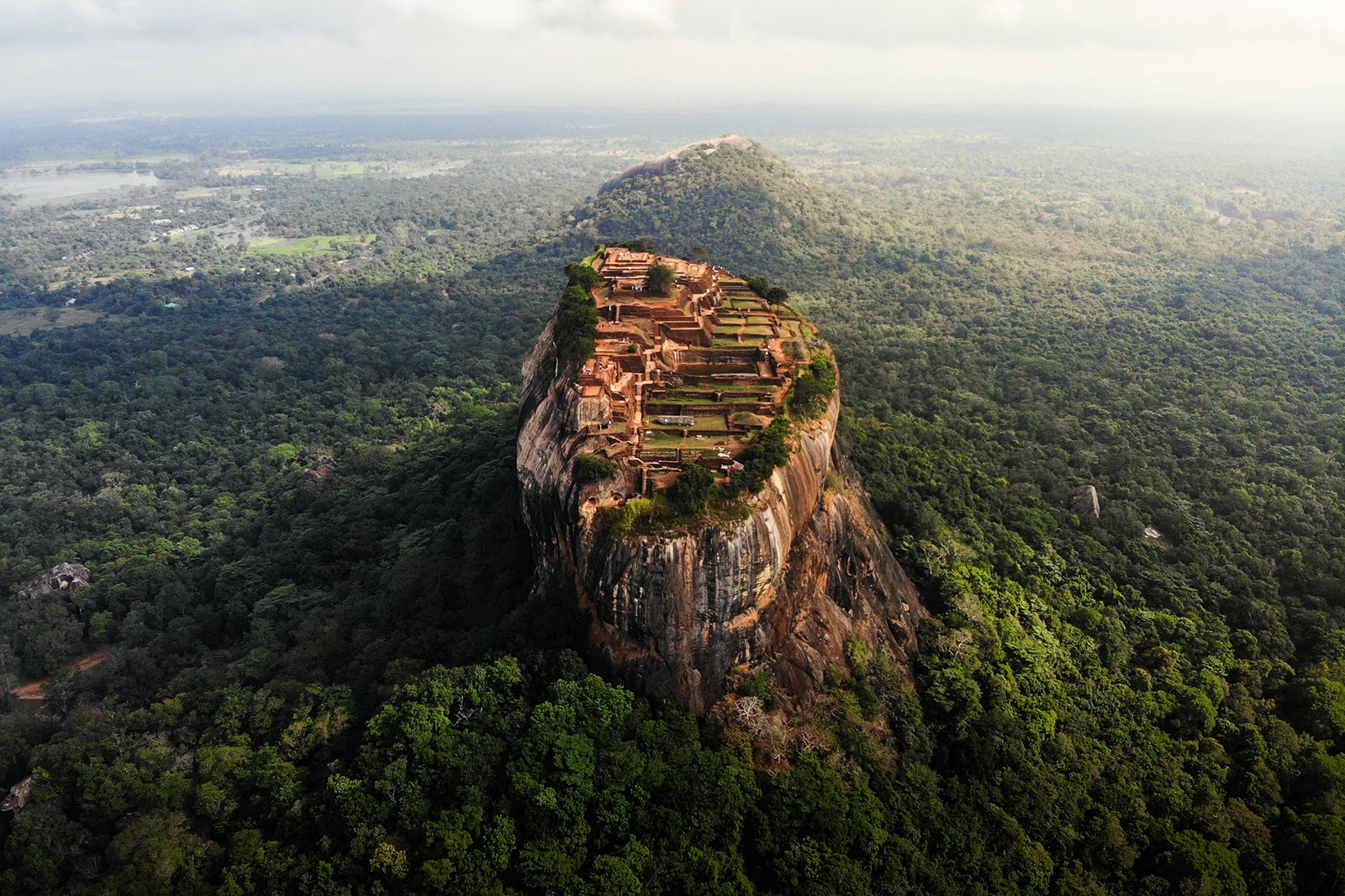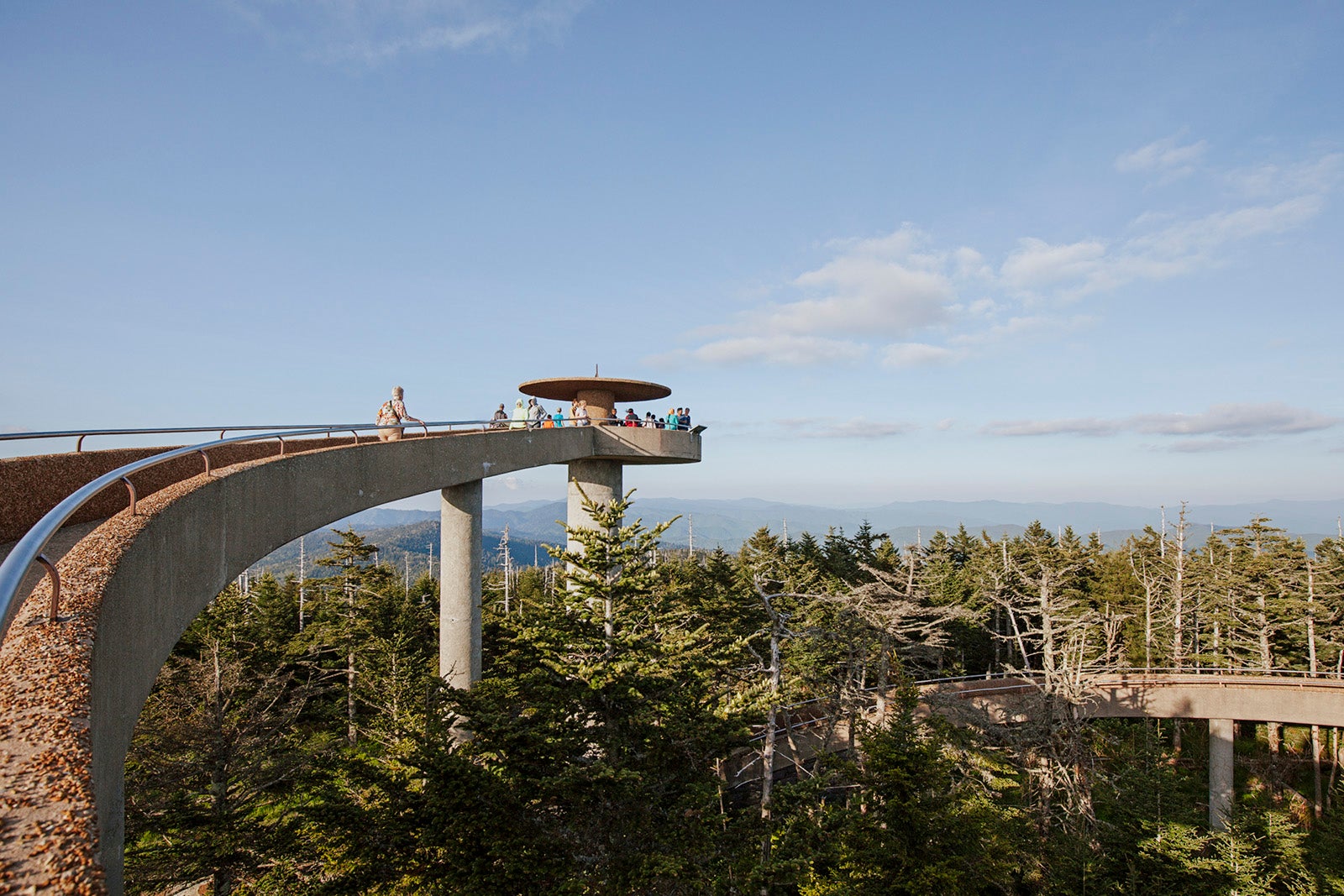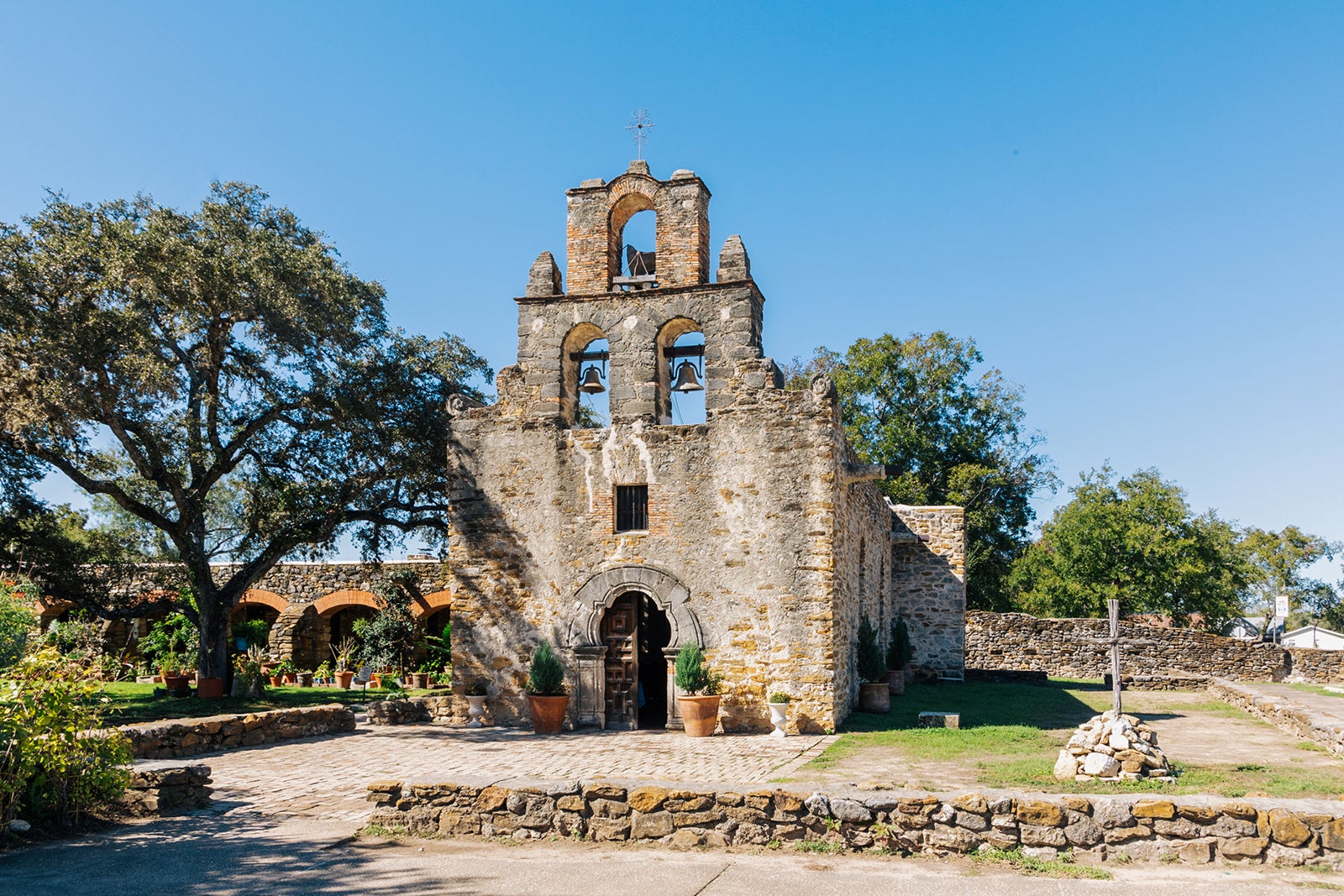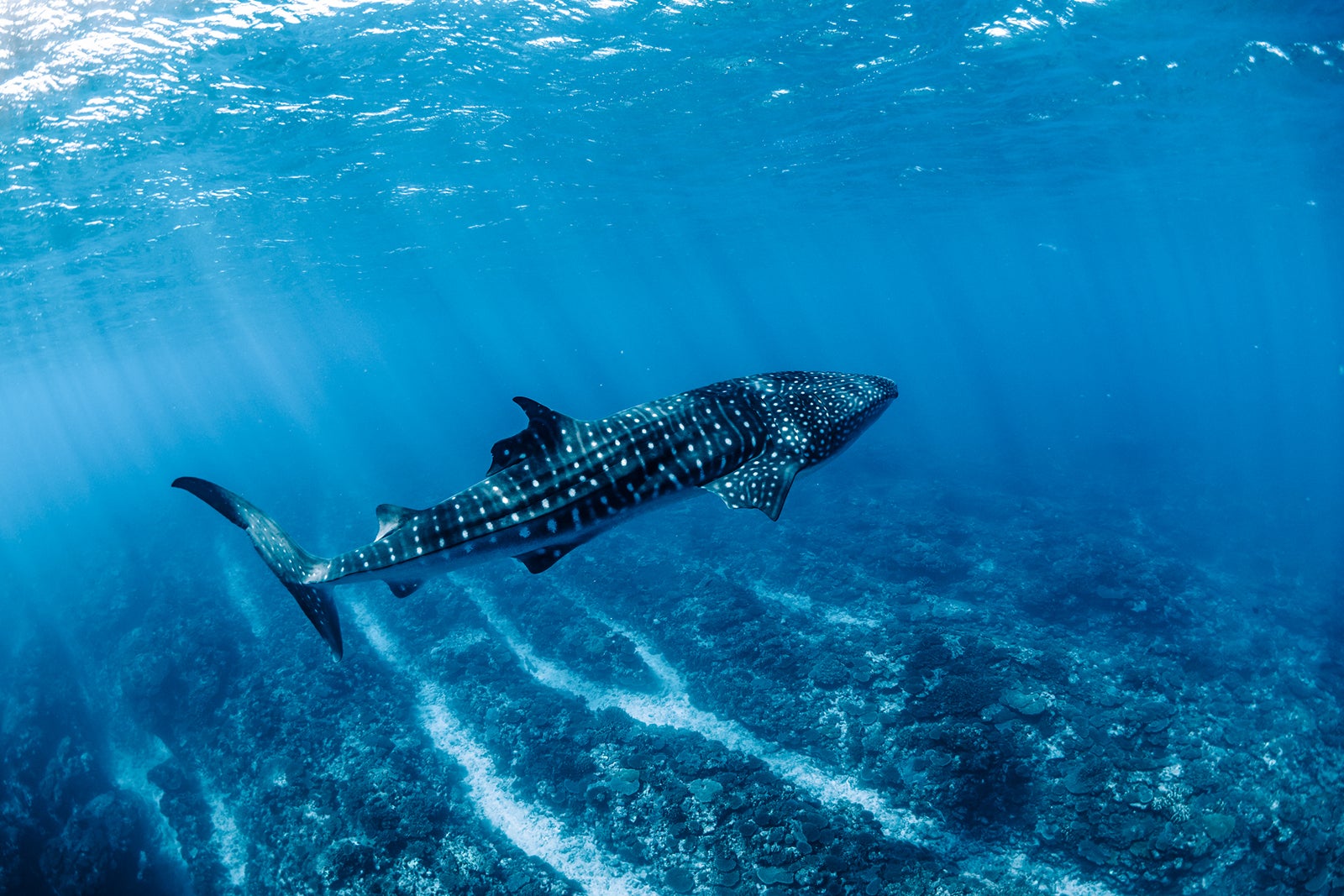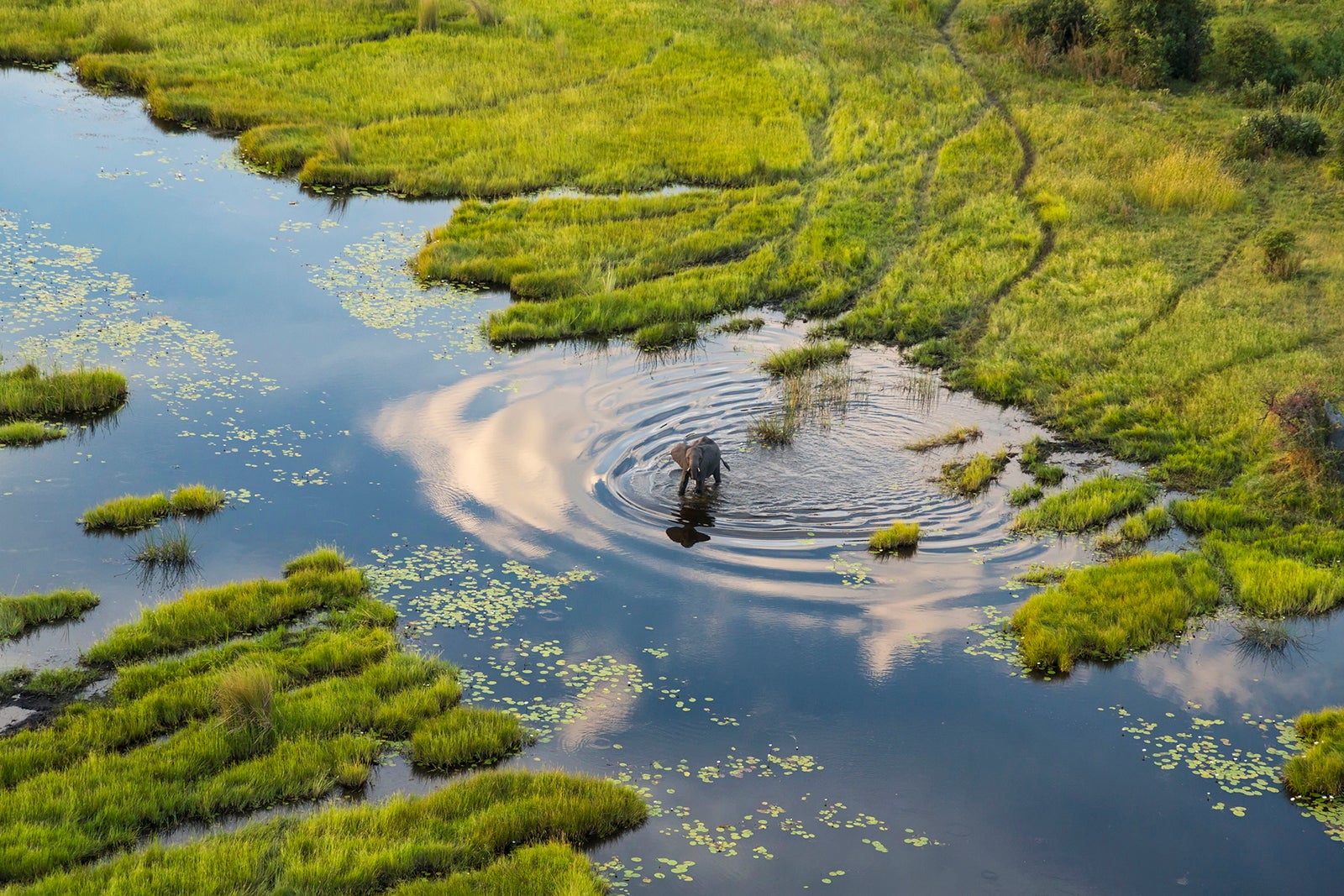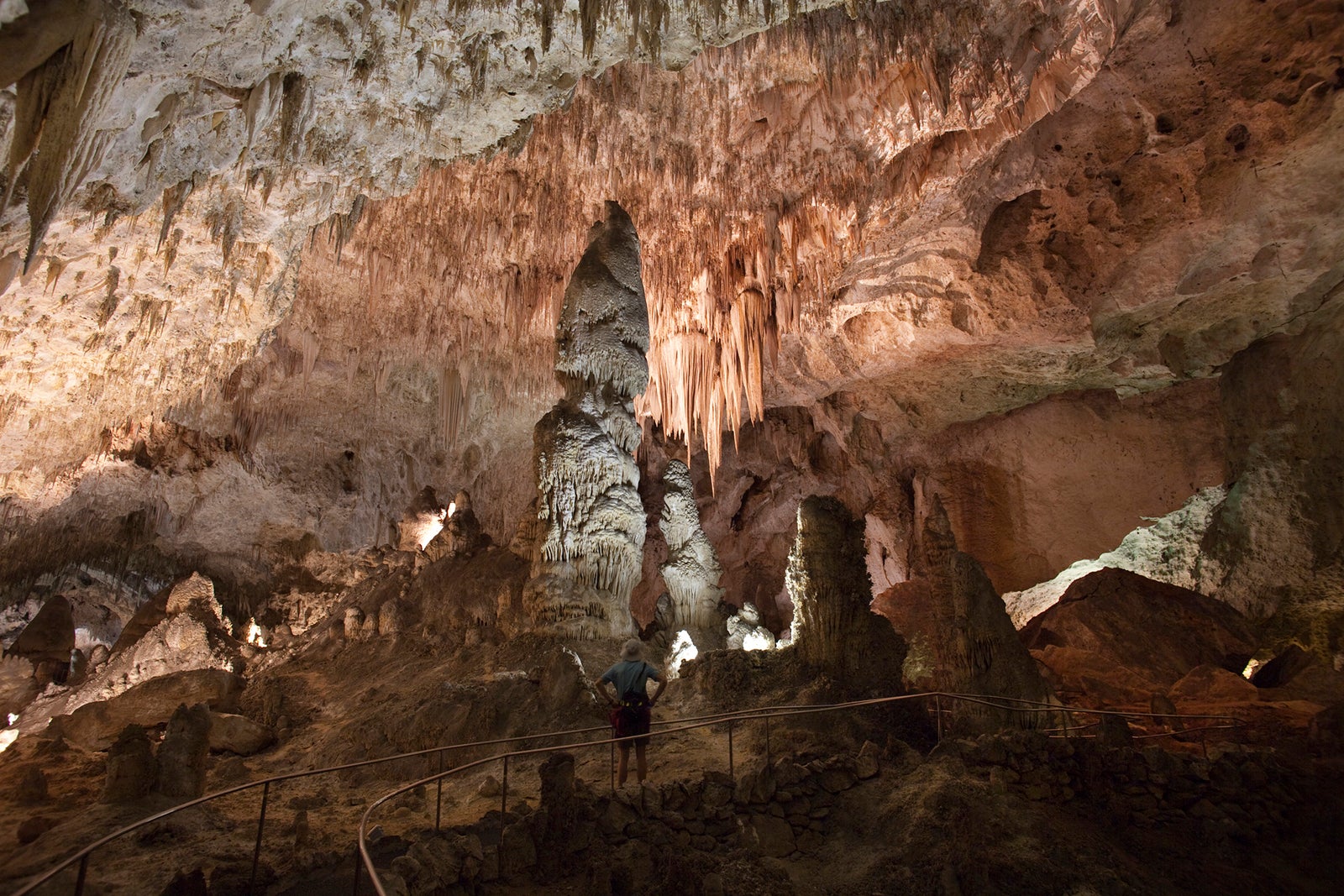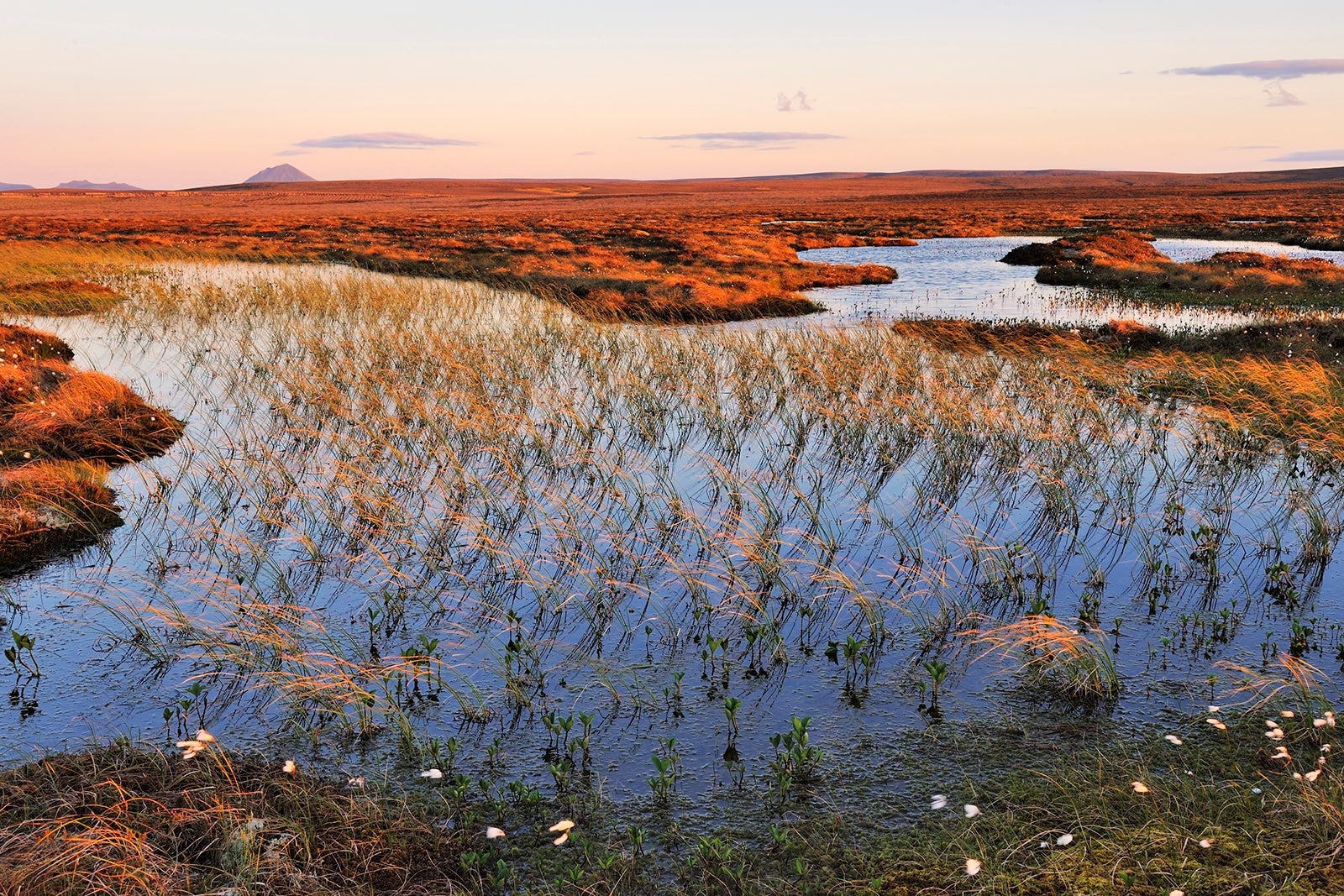UNESCO recently added 24 sites of “outstanding universal value” to its World Heritage List during its 46th annual session in New Delhi.
Lencois Maranhenses National Park in northeastern Brazil and the Via Appia in Italy now join the list of 1,223 World Heritage Sites that counts Yellowstone National Park and Machu Picchu among some of its most well-known landmarks. To be inscribed on the list, a cultural or natural site must meet at least one of 10 criteria, such as having “exceptional natural beauty and aesthetic importance,” representing “a masterpiece of human creative genius” or being “an outstanding example of a traditional human settlement.” A spot on the list gives these places cultural significance and guarantees certain protections to preserve them for future generations.
To help narrow your list of can’t-miss places, here are 21 must-see UNESCO World Heritage Sites the experts at TPG consider among their favorites — plus an insider tip or two.
Petra, Jordan
1 of 2
Climbing the 800 steps to the Monastery at Petra is tough, but the views are worth it. NICK BRUNDLE PHOTOGRAPHY/GETTY IMAGES
Petra, the ancient Nabataean city in Jordan, is a must-visit UNESCO World Heritage Site. It’s hard to imagine a more impressive buildup (and reveal) than strolling through the walled walkway of the Siq until you come upon the Treasury, the stone facade carved into the sandstone walls (famously used as the backdrop for the final scenes of “Indiana Jones and the Last Crusade,” which came out in 1989 shortly after UNESCO added Petra to its list).
You can spend hours wandering between tombs and hiking to additional structures, and while I only had two days there with my family in 2022, the stunning beauty and astonishing architecture left a lasting impression. — Nick Ewen, senior editorial director
Plitvice Lakes National Park, Croatia
I hiked Croatia’s Plitvice Lakes National Park in 2019, and it remains one of the most beautiful places I’ve ever visited. It almost feels like you’re on another planet. The water is crystal clear, the waterfalls are stunning and the trails are well maintained and relatively easy to traverse. There are multiple trails to choose from, so you can easily cater your trip to your fitness level and preferred hike length.
Stay at one of the hotels near the entrance to the park (I chose Hotel Plitvice, located within a protected midcentury building), and schedule your entrance ticket first thing in the morning to avoid the worst of the crowds and heat if you’re there in summer. — Madison Blancaflor, managing editor of content operations
Historic District of Old Quebec, Canada
1 of 2
A view of the Place Royale and the Notre Dame des Victoires church in Quebec City. JAKUB PORZYCKI/NURPHOTO/GETTY IMAGES
Many describe the charming walled section of Quebec City as a miniature French village — a petite Paris, even — and upon driving through the stone-fortressed entrance a few years ago during my first visit, my initial thought was, “Mon Dieu! They’re right!” The city is distinctly European, with its dramatic cliffside perch, cobblestone streets and, of course, Quebecois as the primary language spoken (though English is common, especially in more touristed areas).
Established in the early 17th century by French explorer Samuel de Champlain, Quebec City is the only North American city to have preserved ramparts, so it makes sense that this historic pocket of Canada is a designated UNESCO World Heritage Site. It’s also home to Fairmont Le Chateau Frontenac, one of North America’s most historic and most photographed hotels.

Daily Newsletter
Reward your inbox with the TPG Daily newsletter
Join over 700,000 readers for breaking news, in-depth guides and exclusive deals from TPG’s experts
While staying at the Fairmont is a treat and an ideal place for history buffs to rest their head, there is no shortage of sweet accommodations throughout the fortressed town (an auberge here, an auberge there). Stop at Strom Spa, a Nordic spa on the banks of the St. Lawrence River, where you can drift between saunas, hot pools and cold plunges. — Ellie Nan Storck, managing editor of hotels
Mosi-oa-Tunya / Victoria Falls, Zambia and Zimbabwe
1 of 2
One of the largest waterfalls in the world, Victoria Falls is more than a mile wide. IGNACIO PALACIOS/GETTY IMAGES
Although many Westerners know the mighty cataracts that span more than a mile across the border between Zambia and Zimbabwe along the Zambezi River as Victoria Falls, the name in the local Kololo and Lozi dialects feels much more apt and descriptive.
Mosi-oa-Tunya means “the smoke that thunders,” and, indeed, these falls are thunderous, their spray visible from up to 31 miles away. Up close, the cascades are even more impressive, whether you take them in from a misty walkway across from some of the highest drops or experience their force firsthand, as I did, with a (guided) wade into the so-called Devil’s Pool at the lip of the falls.
Both vantage points proved transformative as I experienced nature’s awesome power. That particular visit marked the start of a memorable trip to explore Zambia’s national parks, and my memories of my journey keep calling me back to Africa to see even more of its natural wonders and vibrant cities. — Eric Rosen, director of travel content
Galapagos Islands, Ecuador
About 600 miles off the coast of mainland Ecuador, the Galapagos Islands is one of the original 12 World Heritage Sites to be inscribed on UNESCO’s inaugural list in 1978, alongside Yellowstone National Park and Krakow, Poland’s historic city center. This volcanic archipelago’s remote location at the confluence of three ocean currents creates a unique setting where you’ll find unusual animals found nowhere else on Earth, including flightless cormorants, marine iguanas and the only species of penguin found north of the equator. Observing fauna like this during his 1835 visit inspired Charles Darwin to develop the theory of evolution by natural selection.
The most seamless way for most travelers to visit the Galapagos is by cruise ship, like Lindblad Expeditions’ 96-person National Geographic Endeavour II, which was my floating base camp on a 10-day sailing in 2019. I loved waking up at dawn to fit in an early morning hike on North Seymour Island to see the nesting grounds of blue-footed boobies and great frigatebirds before relocating in the afternoon to snorkel with marine iguanas and sea turtles off the coast of Rabida Island. However, staying in a hotel on an inhabited island and booking day trips for diving or bird-watching is possible and often more affordable. — Lyndsey Matthews, senior travel editor
Goreme National Park and the Rock Sites of Cappadocia, Turkey
The valleys and rock sites of Cappadocia are a truly surreal landscape. They are particularly special to me since I explored them in 2011 on my first trip outside North America.
You can stay in hotels carved into the rock in Goreme, go on hot air balloon tours and visit spectacular underground cities that date back to the fourth century. The most memorable part of my time in the region was a private guided daylong walk through the valleys of Cappadocia and to ancient churches carved out of rock with a fascinating guide named Walking Mehmet. My husband and I were mostly alone with Mehmet as we walked the valleys and visited those sites, which is amazing considering their beauty and significance. — Katie Genter, senior points and miles writer
Ancient City of Sigiriya, Sri Lanka
This fifth-century rock fortress is smack-dab in the middle of Sri Lanka and preserves the remnants of an extensive network of gardens, reservoirs and structures built at the top of the granite monolith.
My tip is to do an early morning hike up neighboring Pidurangala Rock to watch the sun rise above Siririya, then grab a quick bite and climb the main rock afterward. (It takes about three hours round-trip to hike to the city at the top of the rock and back.) — Matt Moffitt, managing editor of credit cards
Great Smoky Mountains National Park, North Carolina and Tennessee
While many people know that Great Smoky Mountains National Park is the most-visited park in the U.S., you might be shocked to learn that it’s also a UNESCO World Heritage Site. The park, over 500,000 acres, is breathtakingly gorgeous and home to nearly as many tree varieties as in Europe, plus what some researchers believe to be more types of salamanders than anywhere else in the world.
Go for the park — but stay for another: Dollywood, Dolly Parton’s nearby theme park that serves as an ode to the mountains and the people who call them home. — Tanner Saunders, senior hotels reporter
Strasbourg, France
1 of 2
Strasbourg is built along the banks of the River Ill. PHIL HABER PHOTOGRAPHY/GETTY IMAGES
It’s fitting I visited Strasbourg on a Disney river cruise because it resembles a storybook version of a historic European city with its medieval half-timbered houses. The soaring Gothic cathedral in the heart of the old town will draw your eye, but I enjoyed getting lost (and buying rose-shaped gelato) in the meandering side streets and admiring the French- and German-inspired architecture from across the centuries. (UNESCO added the city’s historic center, the Grande-Ile, to its list in 1988 and expanded the designation in 2017 to include the Neustadt, the new town built between 1871 and 1918.)
Avoid the summer crowds like I did by canoeing the canal; you’ll even get to paddle through a lock. If you wish to see the cathedral’s famous astronomical clock in action, you can queue up inside and pay to see the full procession of figures at solar noon. I was satisfied watching the figures representing the different ages of life parade past death every quarter hour for free. — Erica Silverstein, managing editor of cruises
Tongariro National Park, New Zealand
1 of 2
The Emerald Lakes fill explosion craters near the summit of Mount Tongariro. BOY_ANUPONG/GETTY IMAGES
If you’ve never heard of Tongariro National Park, chances are you’ve seen it on screen. Tongariro is home to three active volcanoes, including Mount Ngauruhoe, which played the important role of Mount Doom in “The Lord of the Rings” movie trilogy. Located on New Zealand’s North Island, the park is a dual World Heritage Site, recognizing its cultural and spiritual Maori association and impressive natural volcanic landscape. It is also New Zealand’s oldest national park and its first UNESCO World Heritage Site.
Summertime provides the clearest views of the landscape, but as someone who has been both in fall and winter, it can be enjoyed year-round, depending on how tolerant of rain and fog you are. Clocking in at around 12 miles, Tongariro Alpine Crossing is the most popular hike at the park and one of the more challenging options. Instead, hike the Taranaki Falls Lower Track, a 3.7-mile there-and-back trail with views of Mount Ngauruhoe and a waterfall at the end. On the road to the trailhead, you’ll also see a sign to visit “Gollum’s Pool,” a must-see filming location for those on a “Lord of the Rings” scavenger hunt. — Emilia Wronski, associate photo editor
San Antonio Missions, San Antonio
Growing up in San Antonio, field trips to the Alamo were a simple fact of life, and a visit to the historic site is practically a bona fide Texan rite of passage. But the Alamo isn’t just popular among school children. More than 3 million people from around the world visit the landmark every year.
However, what most people might not know is that the Alamo is part of a larger network of five historic frontier mission complexes (composed of Mission Concepcion, Mission San Jose, Mission San Juan, Mission Espada and Mission San Antonio de Valero, aka the Alamo) that stretch along the San Antonio River. Spanish missionaries built the missions in the early 1700s to convert the local Indigenous population to Catholicism and impose European values upon them. In a move recognizing their historic and cultural significance, UNESCO officially inscribed the Missions on its list in 2015.
Today, when I visit the Alamo and its sister missions, it’s much easier to see them in a more nuanced light — they embody the rich, diverse and sometimes painful history of Texas, from the era of the Spanish Empire to the Texas Revolution. I like to take them in at my own pace, but since the Missions are also a part of the National Park System, ranger-led tours are available. Additionally, traditional bike and electric-assist bike rentals are available at each site, making it easy to zip between them. — Mae Hamilton, associate content operations editor
The Dolomites, Italy
1 of 2
The famous view of the Tre Cime di Lavaredo peaks can be found in the Sexten Dolomites. DANIEL GARRIDO/GETTY IMAGES
This year, I finally checked off a bucket-list item I’ve held for over 15 years — hiking the Italian Dolomites. This UNESCO World Heritage Site comprises nine components across the mountains of northeastern Italy. My trip focused on its westernmost area, the Brenta Dolomites in the breathtaking Trentino region. Over four days, our group mountain biked 20 miles from Lake Ledro to Lake Garda, hiked the Madonna di Campiglio in Ledro and finally hiked 16 miles from our base in Molveno with a mountain guide, crossing the glacial snow melt and stopping at Alpenhuts along the way.
Family-run, eco-mountain lodges focus on food and wellness, making it easy to enjoy great meals, plus sauna, steam or spa treatments after each day’s activities. Consider Da Elda Natural Retreat in Ledro Valley, where food is grown on-site or sourced locally and prepared by Silvia and her family. The Alpenresort Belvedere in Molveno offers a full spa and gourmet dining by chef Diego Rigotti, who previously represented Italy at the prestigious Bocuse d’Or world chef competition.
Arrange local experiences such as wine tastings, cultural attractions, winter ski trips and even hiking guides through a destination management company like Caldana Europe Travel, which has experts that have been coordinating tours of Italy and the Trentino region since 1949. — Becky Blaine, senior newsletter editor
Angkor, Cambodia
1 of 2
The temples at Angkor Wat were built in the 12th century. ASHIT DESAI/GETTY IMAGES
Spanning more than 150 square miles in Siem Reap, Cambodia, Angkor is an archaeological site that allows visitors to explore the remains of Buddhist temples and other buildings that made up the Khmer Empire from the ninth to 15th centuries.
During my first visit to Southeast Asia in 2019, I spent two days in Cambodia and toured the famed Angkor Wat temple and Ta Prohm. The former, known for its meandering pathways and stunning photo opportunities, is still a place where monks worship; a highlight for me was receiving a Buddhist blessing. The latter, famously seen in “Lara Croft: Tomb Raider,” is more wooded, the roots of towering trees gripping tight to ancient temple buildings and piles of rubble.
Something about both places made me feel like I was able to soak up wisdom, as if by osmosis. I can’t say whether I’m actually any wiser, but the peace I found while there was fascinating. — Ashley Kosciolek, senior cruise writer
Antigua, Guatemala
1 of 2
A tuk-tuk taxi passes in front of the Santa Catalina Arch in Antigua. THEPALMER/GETTY IMAGES
Founded in the early 16th century, Antigua served as Guatemala’s capital for almost 300 years. In 1773, earthquakes destroyed much of the city, so the capital moved to Guatemala City. Antigua is one of Latin America’s earliest examples of city planning, with a grid plan that dates back to 1543. The easy-to-navigate layout serves visitors well today.
In the heart of the city, leafy Central Park is an ideal jumping-off point for exploration, as many shops, restaurants and historic sites are within walking distance. Among them include the Cathedral of Antigua, which dates back to 1545. It was destroyed in 1773 and only partially rebuilt over the next century. Don’t miss a photo op under the city’s iconic butter-yellow 17th-century Santa Catalina Arch, built to connect the Santa Catalina convent to a school, allowing the nuns to walk between buildings without being seen. I love visiting the beautifully frenetic Artisan Market, teeming with stalls of Guatemala-made textiles, artwork, woodcrafts and other souvenirs helmed by some of the kindest people I’ve ever met.
One of my favorite times to visit is before Antigua’s Easter Holy Week processions. As part of the celebration, afrombras (carpets made with a mosaic of dyed wood shavings, seeds and flowers) are meticulously laid on the cobblestone streets, sometimes stretching an entire block. — Kristy Tolley, cruise editor
Ningaloo Coast, Australia
Why do I travel? To swim with whale sharks, of course. Well, that’s one of many reasons why I travel.
It certainly was the impetus behind flying over 10,000 miles from Los Angeles to Sydney, on to Perth and finally to Exmouth. From there, I drove to Australia’s far western shores to explore Cape Range National Park and the Ningaloo Coast, which became a UNESCO World Heritage Site in 2011.
When I wasn’t aboard a day charter hopping in and out of the water in pursuit of the spotted gentle giants, some of which looked as large as school buses, I was hiking the area’s gullies on the lookout for unique black-footed rock wallabies or ushering slow-moving echidnas out of the road on my way back to camp. I spent my nights stargazing amid the red dunes at Sal Salis Ningaloo Reef Safari Camp and waded out to the nearby reef in the morning to snorkel among some of the 700 or so fish species and other marine life that call this untouched habitat home. — Eric Rosen
Memphis and its Necropolis — the Pyramid Fields from Giza to Dahshur, Egypt
1 of 2
The Pyramids of Giza are about 4,600 years old. KITTI BOONNITROD/GETTY IMAGES
When you realize you’re seeing one of the oldest human-made structures in the world, it makes you stop and take it all in. That’s exactly how it feels to see the three Pyramids of Giza, the Great Sphinx and everything else that remains from the capital of ancient Egypt at Memphis. The sites are crowded today, and the area around them is ultra-touristy (yes, there’s even a Pizza Hut nearby), but you won’t regret visiting.
No matter how enticing some hotels look, you will regret staying near the pyramids. Instead, opt for one of the luxury hotels in nearby Cairo, like the Four Seasons Hotel Cairo at Nile Plaza. It is much more centrally located and can help arrange a private guided trip to the UNESCO World Heritage Site. — Tanner Saunders
Imperial Palaces of the Ming and Qing Dynasties in Beijing and Shenyang, China
1 of 2
The Meridian Gate of the Forbidden City was built in 1420. KOOL99/GETTY IMAGES
Though this UNESCO World Heritage Site comprises the historic royal residences of emperors in Beijing and Shenyang, many travelers are likely familiar with the listing’s most famous component: the Forbidden City in the center of Beijing. The palace was off-limits to most subjects when the Ming and Qing dynasties ruled from the 15th to 20th centuries. Now, as long as you have patience for crowds, you can book a ticket online or through your hotel to explore the spectacularly preserved religious buildings, ceremonial halls and landscaped courtyards within. While it’s impossible to see all 10,000 rooms within the palace, prioritize visiting the Dragon Throne, where the emperor sat in the Hall of Supreme Harmony.
When I visited in 2007 during a study abroad program in college, I was especially impressed by how vast Tiananmen Square was at the entrance to the palaces. Though the Forbidden City has been on the World Heritage list since 1987, UNESCO added the Beijing Central Axis in 2024. The Central Axis, which runs north to south through the historic city center, includes not only the Forbidden City but also Tiananmen sites like the Chairman Mao Memorial Hall and Zhengyangmen Gate Tower, as well as other landmarks like the Drum and Bell Towers and the Temple of Heaven. — Lyndsey Matthews
Okavango Delta, Botswana
Nothing about the Okavango Delta makes sense. The ground is dry during the wet season but flooded during the dry season. Rather than emptying into a sea, the delta ends in a desert. Rains that fall 1,000 miles away in Angola slowly make their way downriver over several months, bringing its parched waterways back to life and attracting some of the planet’s rarest wildlife.
Although I’d envisioned myself eye to eye with elephants from a dugout canoe during the flood months, I visited during the wet season in February (remember, dry ground!) so that “islands” were just small hills in otherwise easily navigable terrain.
It was not my first safari, but it was certainly my most memorable thanks to the indelible land and waterscapes I traversed both from the air, looking down at the emerald-hued flood plains, and by safari vehicle, stalking leopards teaching their young to hunt and packs of endangered African wild dogs tirelessly roaming in search of prey.
I imagined myself to be the first human ever seen by the profusion of baby animals, including hyena pups and lion cubs, born that year. I may have left as much of an impression on them as they did on me.
To keep your ecological footprint light in this UNESCO-recognized site, stay in a camp like andBeyond Xaranna Okavango Delta Camp or Wilderness Mombo. Their sustainability measures include low-impact construction using salvaged materials, 100% solar power, a ban on single-use plastics and community support projects like helping build wells and medical facilities. — Eric Rosen
Machu Picchu, Peru
1 of 2
There are many llamas that live within the Machu Picchu complex. WESTEND61/GETTY IMAGES
Of Peru’s 13 UNESCO World Heritage Sites, the Historic Sanctuary of Machu Picchu is easily its most famous and one of my favorites worldwide. A masterpiece of Incan architecture, this 15th-century citadel is built on a mountaintop where the Andes meet the rainforests of the Peruvian Amazon, about 50 miles northwest of Cusco. Abandoned in the 16th century following the Spanish invasion of the Inca Empire, Machu Picchu remained hidden from the outside world until 1911, when archaeologists essentially stumbled upon it while searching for other Incan sites.
I’ve been lucky enough to visit Machu Picchu twice. In 2009, on a college spring break, I could roam virtually anywhere I liked within the archaeological complex. When I returned more than a decade later, I found that in addition to daily visitor caps (4,500 people most days), the government instituted a series of three circuits with 10 subroutes to control the flow of tourists. To get the iconic postcard shot from an upper terrace, plus a chance to wander around buildings below, opt for Circuit 2’s Route 2-A. You can purchase tickets online via the government’s website, but I appreciated the ease of having a guide handle all the logistics when I traveled with tour operator Modern Adventure. (Not to mention, the upscale accommodations at Inkaterra Machu Picchu Pueblo Hotel sure beat schlepping back to a hostel in Cusco, as I did in college.)
Since you’re nearly 8,000 feet above sea level, drink plenty of water and wear sunscreen during your visit. (It also doesn’t hurt to acclimate to the altitude for a few days before tackling a longer hike on the Inca Trail.) There is nothing like altitude sickness and a sunburn to ruin a trip. — Lyndsey Matthews
Related: How to get to Machu Picchu
Carlsbad Caverns National Park, New Mexico
With more than 120 limestone caves, Carlsbad Caverns National Park is a mystical world hidden underneath a section of southern New Mexico near the sleepy town of Carlsbad. There, you can catch people crawling into the caves on their hands and feet, otherwise known as spelunking, or take a walk down to see glowing stalactites and stalagmites that look like they’re from another planet.
Speaking of other planets: The caverns are less than 100 miles from Roswell, New Mexico, and its extraterrestrial lore, making for the perfect pit stop on the way to this World Heritage Site. — Tanner Saunders
The Flow Country, United Kingdom
Bogs cover almost a quarter of Scotland (4.5 million acres, to be exact). But for millennia, they’ve been shrouded in myth and mystery. In ancient times, people saw bogs as the home of witches, ghosts and fairies, the latter rumored to lure unsuspecting passersby deep into the bogs and to their deaths.
But in 2024, The Flow Country — one of the world’s largest and most intact blanket bog systems — became one of the newest UNESCO World Heritage Sites. Located in northern Scotland, it’s the first peatland bog in the world to gain World Heritage status. It’s a major move that recognizes the oft-overlooked significance of bogs — they make up just 3% of the Earth’s land mass but store twice as much carbon as all the world’s forests combined, making their preservation an essential part of the fight against climate change.
Though it may look like flat, swampy land, The Flow Country has a unique ecosystem teeming with peatland pools and carnivorous plants like butterworts. It’s also an important breeding ground for birds like the golden plover and the red-throated diver.
There are various ways that hopeful visitors (like myself) can explore The Flow Country, including self-guided hikes available in the area, like the 1 1/2-mile Dubh Lochan Trail, which winds through dozens of peat pools. If you want to get even more up close and personal, consider volunteering in The Flow Country to help with tasks like trail maintenance. To learn more about the region and the people who’ve called it home for centuries, visit the Timespan museum in Helmsdale. — Mae Hamilton

